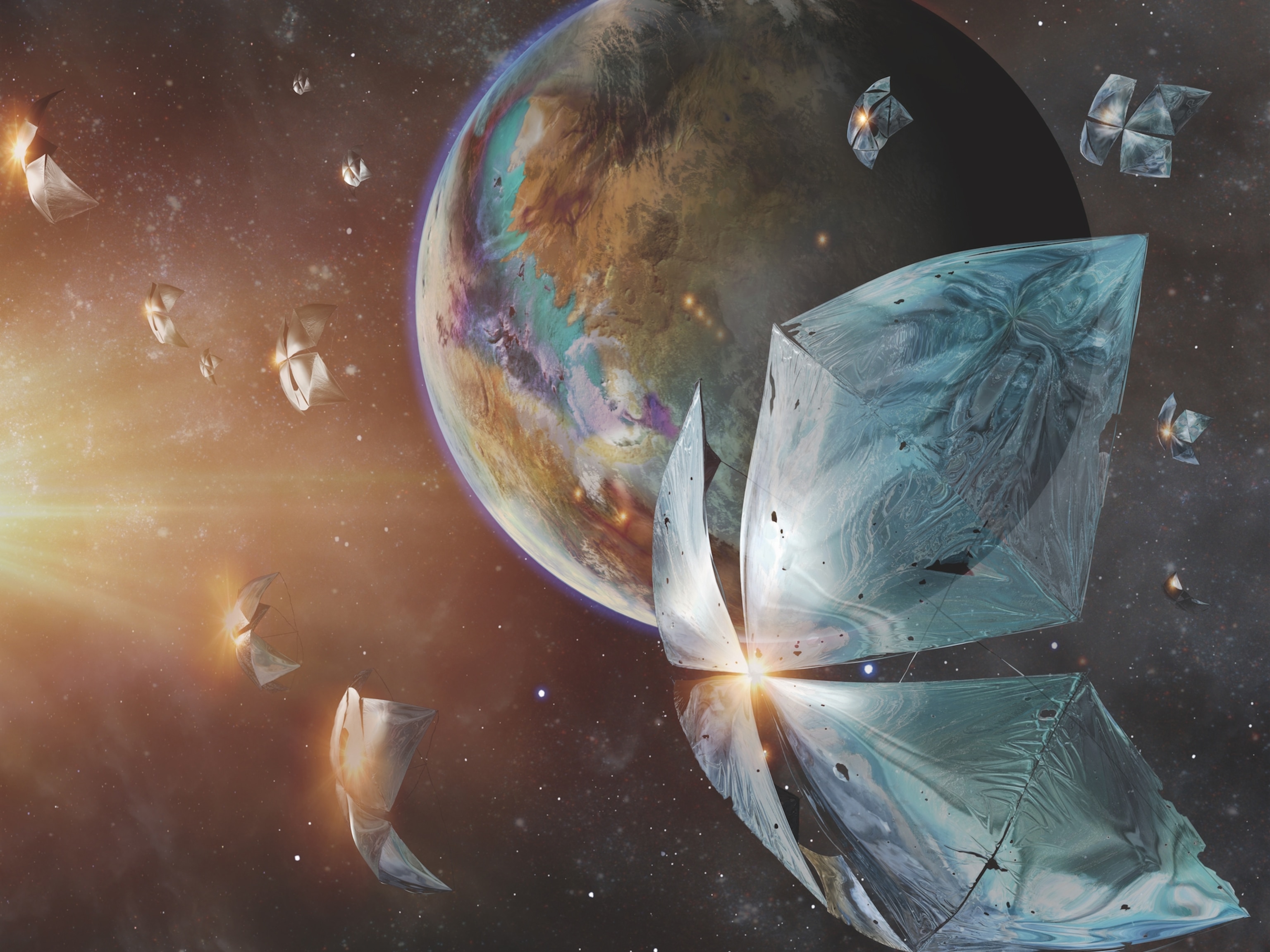
NASA's Kepler Finds Two Earth-Size Planets Around Sunlike Star
Discovery is next major step in quest for alien Earths, team says.
Two new planets found orbiting a sunlike star are the first truly Earth-size worlds discovered by NASA's Kepler mission, scientists announced today.
The find comes on the heels of Kepler's first potentially Earthlike planet orbiting squarely within its star's water-friendly "Goldilocks zone"—the region that's not too hot and not too cold for liquid water to exist on a planet's surface.
Designated Kepler-20e and Kepler-20f, the two new planets are comparable in size to Earth and Venus: At 0.87 times the size of Earth, Kepler-20e is slightly smaller than Venus, while Kepler-20f is 1.03 times Earth's radius.

But both new extrasolar planets—or exoplanets—orbit their star much too closely to be within the habitable zone.
In fact, the entire Kepler-20 system is believed to contain at least five planets all orbiting their star within a distance smaller than that between Mercury and the sun.
This orbital distance makes the planets very hot. For instance, Kepler-20e is estimated to have an average surface temperature of 1,400ºF (760ºC), while Kepler-20f is a "cooler" 800ºF (427ºC).
By contrast, Earth's average surface temperature is 57.2ºF (14°C).
(Related: "Five New Planets Found; Hotter Than Molten Lava.")
Still, this is the first confirmation of truly Earth-size planets by the Kepler team—a key goal of the overall mission.
"December 2011 may be remembered as the first time humanity was able to discover an Earth-size planet in orbit around another star," lead author Francois Fressin, of the Harvard-Smithsonian Center for Astrophysics (CfA) in Cambridge, Massachusetts, said today during a NASA teleconference.
The discovery "demonstrates for the first time that Earth-size planets exist around other stars, and that we are able to detect them."
New Planets a Tight-Knit Group
Previously discovered exoplanets have all been considerably larger than Earth.
Even the just announced Goldilocks world, Kepler-22b, was estimated to be 2.4 times Earth's radius and is thought to have a fairly low density, meaning it could have a thick atmosphere and a surface quite unlike Earth's.
(Related: "'Backward' Planet Has Density of Foam Coffee Cups.")
With the new Kepler discovery, we now have confirmation of planets that "are exactly the right size [to be Earthlike] ... but are too hot" for life as we know it, team member David Charbonneau, also with the CfA, told National Geographic News.
Another curious feature of the Kepler-20 system is that the other three known planets, which are Neptune-size worlds, orbit among the smaller, rocky planets.
This is a different structure from our solar system, where the rocky worlds are closer to the sun while the gas giants have more outlying orbits.
"We really are challenging scientists to figure out how this [solar system] formed," Linda Elkins-Tanton, director of the Carnegie Institution's Department of Terrestrial Magnetism in Washington, D.C., said at the press briefing.
Earth Twin Found in Two Years' Time?
To find planets around sunlike stars, the Kepler spacecraft continually observes one section of sky within the constellations Cygnus and Lyra.
In this field of view, Kepler detects changes in the brightnesses of individual stars, which may indicate the presence of planets transiting—or passing in front of—a star, as seen from Earth.
To date, the Kepler mission has identified more than 2,300 exoplanet candidates—worlds that are suspected of orbiting other stars but that need more observations to be confirmed.
(Related: "Fifty New Planets Found—Largest Haul Yet.")
Repeated and periodic transit events occurring at a particular star can confirm the presence of one or more exoplanets, as was the case for the Kepler-20 system.
Further observations will be needed to find that "holy grail" of exoplanet discovery: an Earth-size world located within a sunlike star's habitable zone—and possibly even containing liquid water on its surface.
"What drives the Kepler team is continuing to find smaller exoplanets farther from their stars," the CfA's Charbonneau said. "We need more data."
But for that to happen, the Kepler mission will need more time—and that could require a mission extension. For now, the project is slated to end in November 2012.
Still, Charbonneau said, even with the current mission time line, "we are hoping to announce in the next two years the discovery of an Earth-size, habitable exoplanet."





